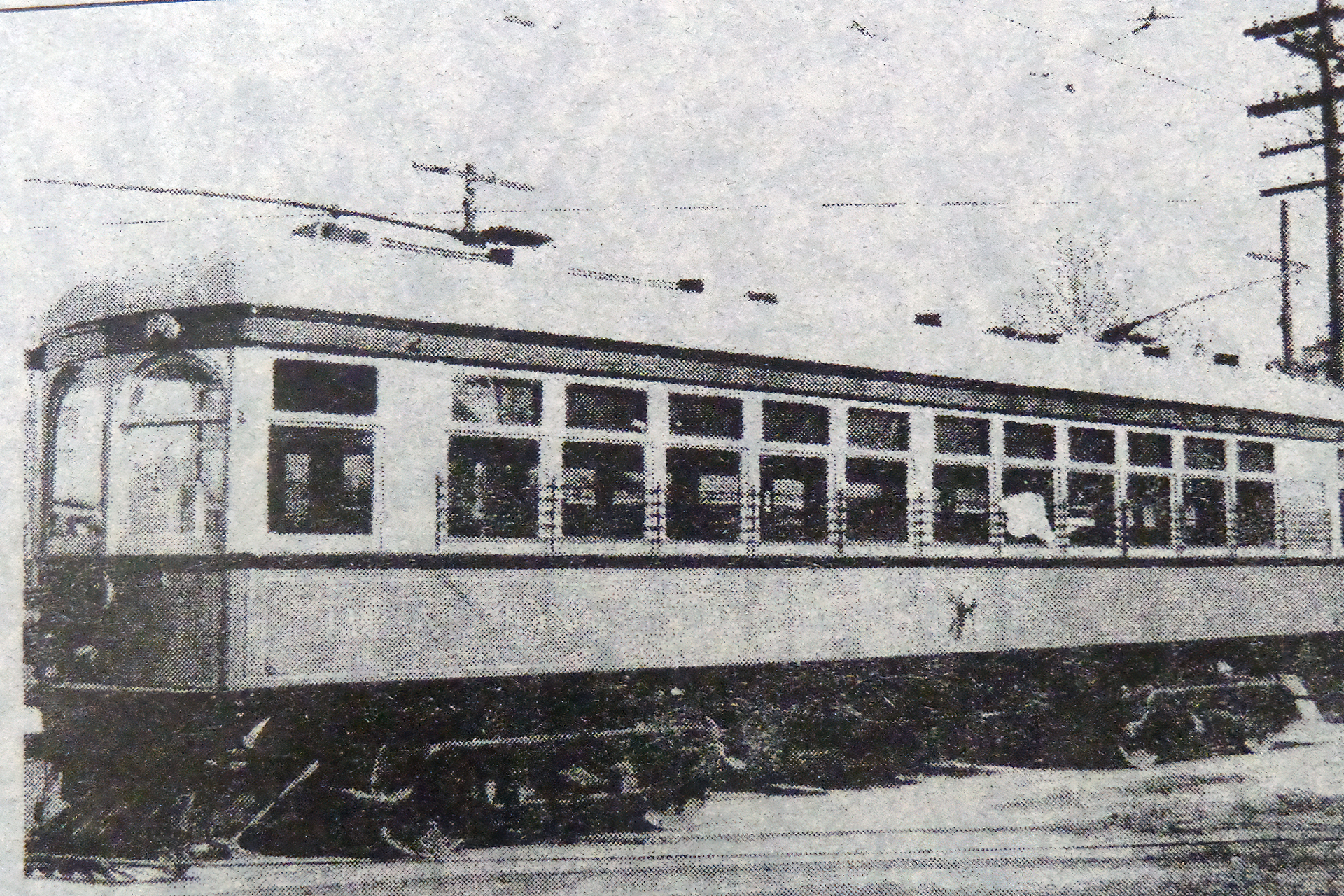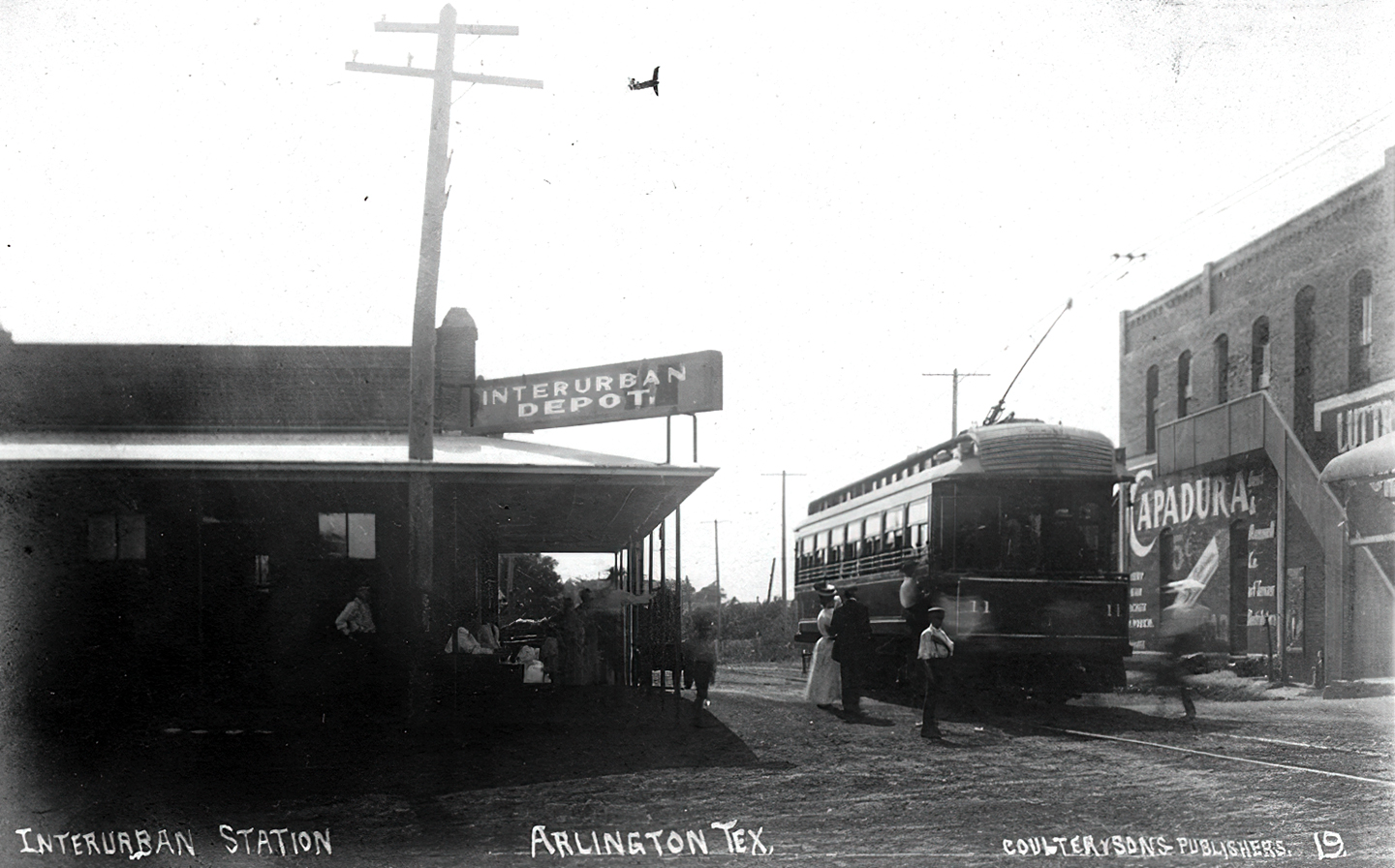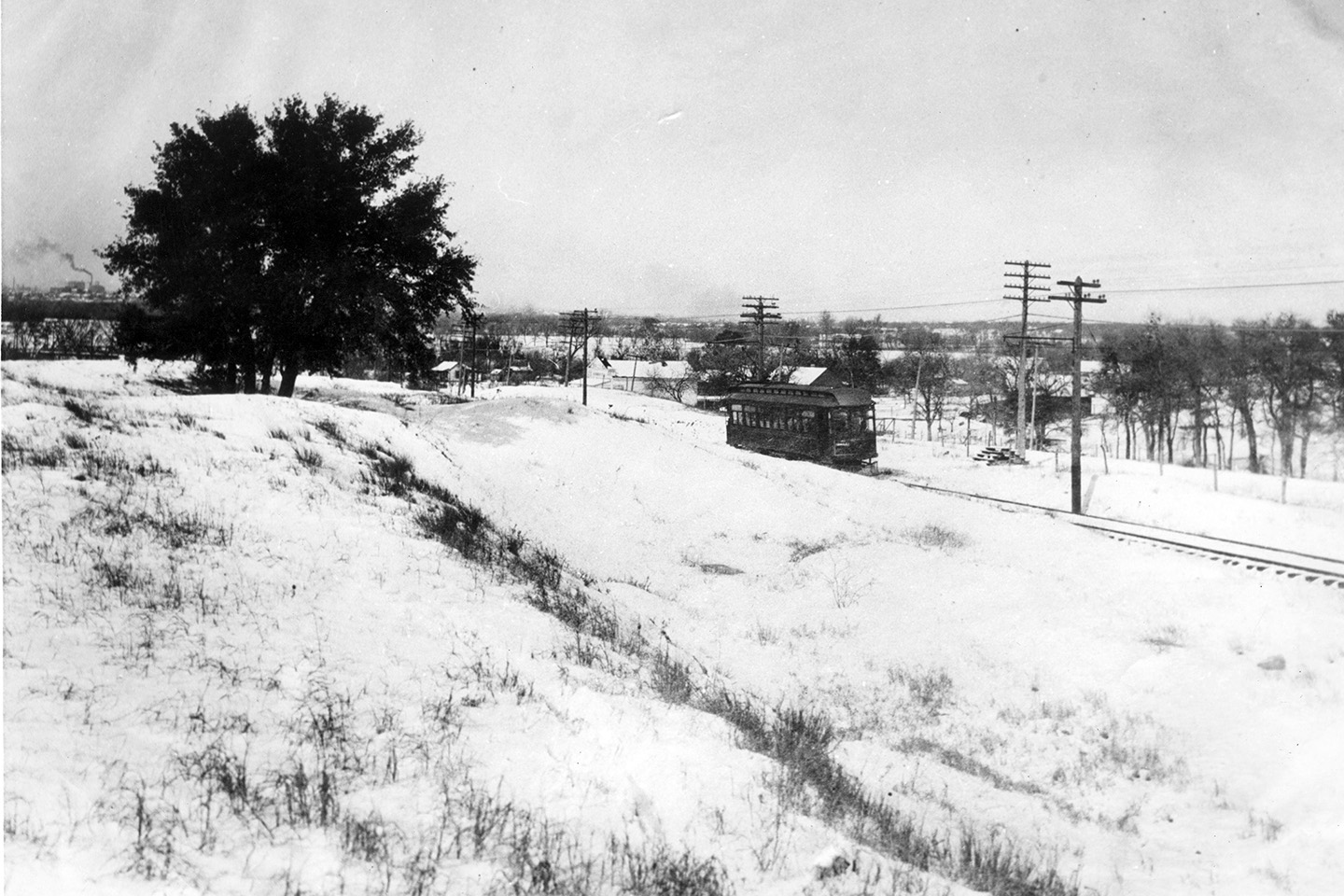
Last N.T.T. Co. Interurban on Tracks Monday
This article appeared in the December 14, 1934 issue of the Arlington Journal.
The last interurban will run over the Ft. WorthDallas tracks on Monday, Dec. 24, according to reports issued by the Northern Texas Traction Company Monday.
Bus service running through Arlington will be begun by the Texas Motorcoaches on Dec. 20. The route will be run a few days before the interurbans stop in order that Arlington citizens may get more used to it and make arrangements to change their patronage from the interurbans to the busses.
As a result of a second petition signed by numbers of citizens, J. M. Houston reports that Mr. Townsend, of Ft. Worth, whom he talked to Monday in conference, has announced the route the busses will take through Arlington. The eastbound motorcoach will enter Arlington on Abram, turn north on Pecan to Main, turn east on Main to Mesquite, south on Mesquite to Abram, east on Abram to Collins, and north on Collins to the highway (the Bankhead Highway, now Texas 180). Those coming from Dallas will follow the same route in reverse order. The bus will not turn north on Center, as previously reported, but will cross that street in going down Main.

After the disbanding of the interurban offices here, the bus service will establish an office on commission in dome downtown drug store. Arlington citizens will get a negative Christmas present in the form of a farewell to the town's age-old friend, the interurban service, and will receive an additional present in the way of the introduction of the "through Arlington" bus service. Eight new busses will be added to the line and the schedule run on a twenty minuteforty minute service basis from both Dallas and Ft. Worth.
Editor's note: The following history of the Interurban in Arlington appeared in an earlier edition (November 30, 1934) of the Arlington Journal.
Arlington citizens will miss the service extended them by the by the interurbans. They have been the means of building the city, the convenience of the citizens, and have been the source of employment for many of them. N.T.A.C. students have found them handy in the past. This will be the first time in numbers of years that Arlington has been silent all day along Abram Street.
In 1901, the Bishop Sherwin Syndicate of Cleveland, Ohio, at that time owning and operating the street railway in the City of Fort Worth, made application to the State of Texas for permission to extend its electric car operation from its tracks in Fort Worth through Tarrant and Dallas counties to connect with electric lines operating in Dallas. On April 5, 1901, an emergency bill was passed by the State Legislature, giving to the Northern Texas Traction Company the right to construct the interurban line.
Construction work was started as soon as possible after April 5, and was completed in July 1902. The line consisted of single track, with numerous sidings. Service was inaugurated in July 1902. Hourly schedules were operated from 6:00 a.m. to 11:00 p.m. with a running time of one hour and thirty-five minutes.
In 1906 the Northern Texas Traction Company came under the management of Stone & Webster, Incorporated. The property at that time consisted of the city lines in Fort Worth, the Fort Worth-Dallas Interurban, and the street car lines in Oak Cliff.

The interurban line was a success from the start and in 1908 it was necessary to put on additional schedules. At the time limited cars operating on the half hour from 7:30 a.m. to 6:30 p.m. were started, making the run in one hour and fifteen minutes. Modern car equipment was purchased for this operation.
Service was further improved during war times (WW I) when soldiers were in training in both Fort Worth and Dallas. Additional double track was constructed at Dalworth and Arlington in the years 1918 to 1920, and block signals installed for further safety of passengers.
The peak of riding and revenues was reached in 1920, when 3,879,200 passengers were carried and earnings were $1,575,200. About this time the increase in automobiles produced and improved roads became major factors affecting riding, and decline in in both riding and revenue started.
The trend of interurban earnings has been downward each year since 1920, until in 1933, only 483,800 passengers were handled and revenue amounted to $175,200, This large decrease is not attributable to revenues lost to bus operation except in a limited way. The interurban is daily carrying many more passengers than the bus lines operating between Fort Worth and Dallas. The major portion of the loss in patronage on the interurban is due to improved highways and the constantly increasing use of private automobiles.
